- Marine Surveyor Accreditation Guidance Manual – Part 22
- Case Study– Compliance action on an AMS’s accreditation
- Domestic Commercial Vessels - Decks
- Understanding Conflict of Interest Provisions for Accredited Surveyors under the National Law Regulations
- Temporary Operations Permits – Division 5 and 6 – Ongoing Issues
- Instructions to Surveyors (DCV-ITS-022)
- Surveyor Workshop – October 2024
- Alternate Survey Approvals - Surveyors must conduct surveys in accordance with prescribed standards
- Have your say on the new Accommodation, Arrangement & Personal Safety form
- Survey Matters suggestions
Marine Surveyor Accreditation Guidance Manual – Part 2
Edition 3 of the Marine Surveyor Accreditation Guidance Manual – Part 2 was approved by the National Regulator on 15 July 2024 and will commence on 1 January 2025. Key changes made to the manual include:
- Increased Owner Control and Flexibility with Survey Cycles
- Owners of high survey frequency vessels can now choose to conduct their out-of-water survey in either year 2 or year 3 of the survey cycle.
- Owners of medium survey frequency vessels can choose to conduct their year 3 survey either in or out of the water.
- Simplified Dual Class 2/4 Certification for Leisure Type Vessels
- Class 2 vessels engaged in leisure type activities (up to C waters) can now use the same CE certification for structural verification as Class 4 vessels, reducing regulatory burden for skippered Class 4 operations.
- Clearer Reporting Obligations for Repair and Damage Surveys
- A definition has been added for "partial" surveys, along with a process described to allow reporting to AMSA.
- Use of Own Forms
- SAGM now allows any AMS to use their own survey reporting forms, provided these forms contain sufficient detail.
- Easier Entry Survey for Class C Restricted Vessels
- Design documentation requirements for restricted C class vessels have been made less burdensome.
- Significant Detail Added to the Description of Each Survey Type
- A significant increase in detail has been added to the descriptions of each survey type within Table 2 and Table 6.
The approved document will be published on the AMSA website towards the end of 2024 to provide surveyors with an opportunity to familiarise themselves with the final version before it comes into effect.
In the meantime, AMSA is currently reviewing survey forms, the MARS system, and internal assessment processes to allow implementation of Edition 3 of SAGM Pt 2, which commences on 1 January 2025.
Case Study– Compliance action on an AMS’s accreditation
AMSA field staff lodged a complaint in relation to an AMS after conducting inspections on multiple vessels. AMSA performed audits on periodic, out of water, shaft and lightship surveys performed by an Accredited Marine Surveyor (AMS) across multiple vessels. The audit identified several Major Non-conformances. On 25 May 2023, the AMS was invited to show cause why their accreditation should not be revoked due to the failure to comply with a condition of accreditation referred to in Division 3.3 (Sections 32 and 33) of the Marine Safety (Domestic Commercial Vessel) National Law Regulation 2013 (the Regulations) along with a request to provide corrective action to the audit findings. On 20 July 2023, after evaluating the responses from the AMS, the delegate of the National Regulator decided to revoke the accreditation of this AMS. Section 44(1) of the Regulations provides the power to the National Regulator to revoke accreditation if an Accredited Marine Surveyor contravenes a condition of accreditation referred to in Division 3.3).
On 1 August 2023, the AMS applied to the National Regulator for internal review of the decision in accordance with Section 142 of the Marine Safety (Domestic Commercial Vessel) National Law Act 2012 and Section 48 of the Regulations. On 16 November 2023, after evaluating the submissions made, the new delegate of the National Regulator affirmed the decision to revoke the accreditation.
Conditions Contravened
The condition in section 32 of Division 3.3 of the Regulations requires an AMS to conduct a survey of a domestic commercial vessel in accordance with a standard prescribed by a Marine Order that relates to the survey of domestic commercial vessels. Section 5 of Marine Order 503 (Certificates of survey-national law) 2018 in turn prescribes Part 2 of the National Law – Marine Surveyors Accreditation Guidance Manual (SAGM) 2014 as the survey standard.
The AMSA delegate formed the view that the AMS failed to comply with the requirements of Section 32, in Division 3.3 of the Regulations and Clause pts- 2.3, 2.8, 2.9.1, 2.9.2, 4.7, 4.8, 4.9 and 4.11 of SAGM Part 2 as the prescribed survey standard.
Reasons for revocation
- The AMS did not perform a shaft survey on several vessels as required by table 9 of SAGM Part 2.
- The AMS did not perform a lightship survey on a Class 1 vessel as required by SAGM Part 2.
- Many of the defects identified during the AMSA inspection on some vessels were serious, long standing and indicative of inadequate scope and depth of survey conducted by the AMS. Surveys conducted were not in accordance with the requirements of SAGM, albeit conducted months earlier than the AMSA inspection. The AMS failed to identify these issues in their survey report, and further failed to report them to AMSA, breached the requirements of SAGM, and the conditions outlined in sections 32 and 33 of the Regulations.
- The AMS also did not take an approach of implementing corrective actions to their survey practices to perform the surveys in accordance with SAGM Part 2.
Below are some photographs of the vessel’s condition, as observed by AMSA Inspector, a few months after the AMS’s survey.
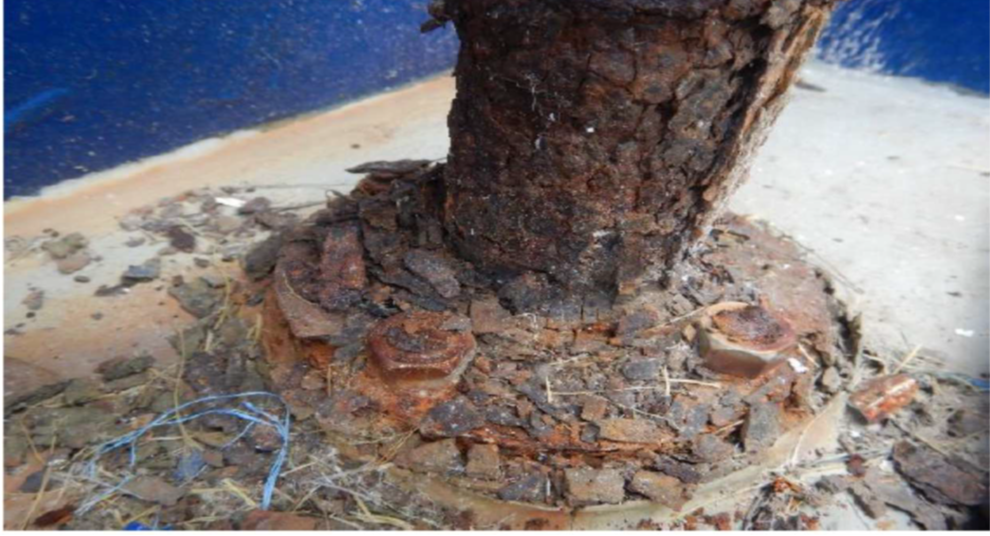
Figure 1: Defective, badly rusted fuel inlet pipe
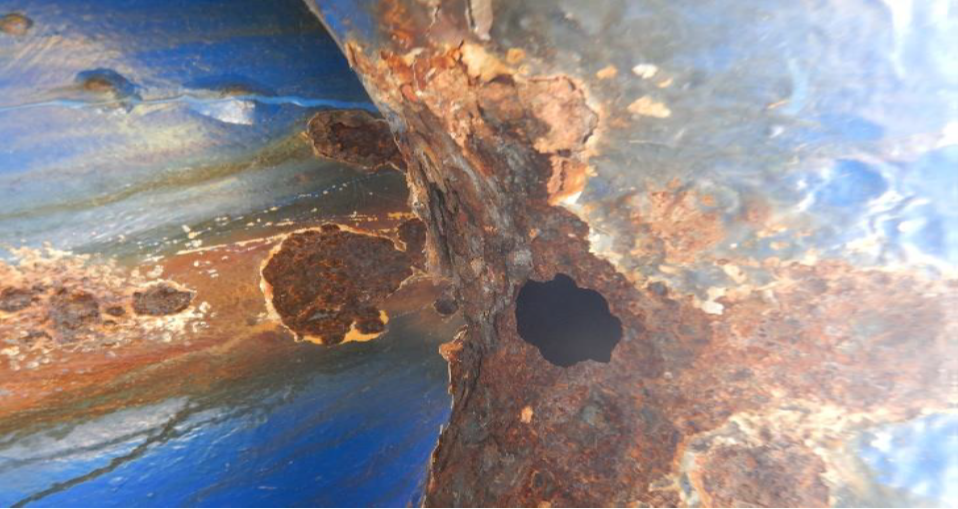
Figure 2: Air vents rusted and holed
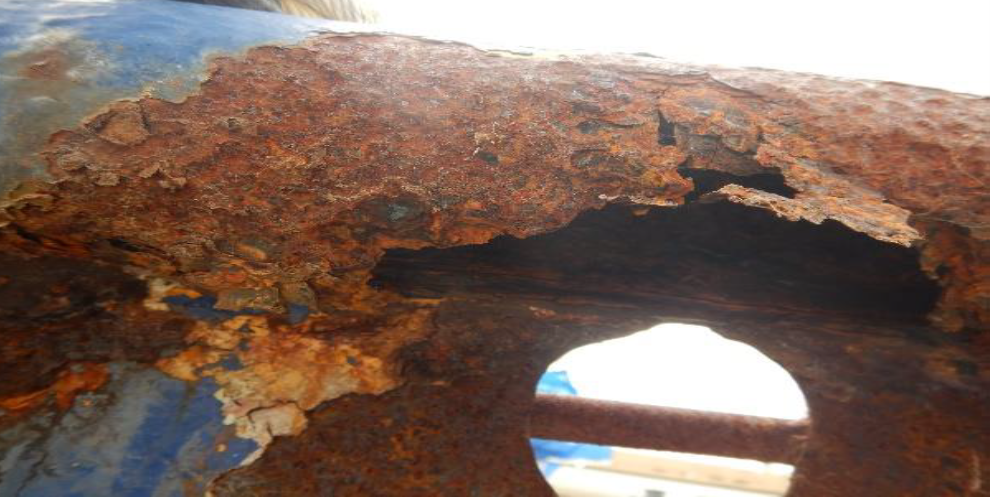
Figure 3: badly rusted bulwarks, with holes that could injure crew members

Figure 4: Doors not weathertight / watertight
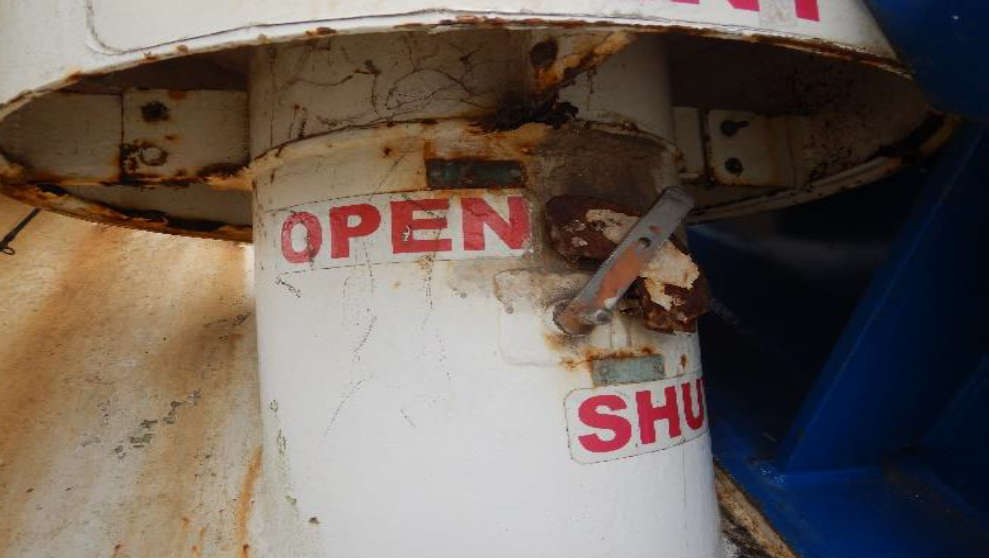
Figure 5: Defective and inoperable Engine Room air intake
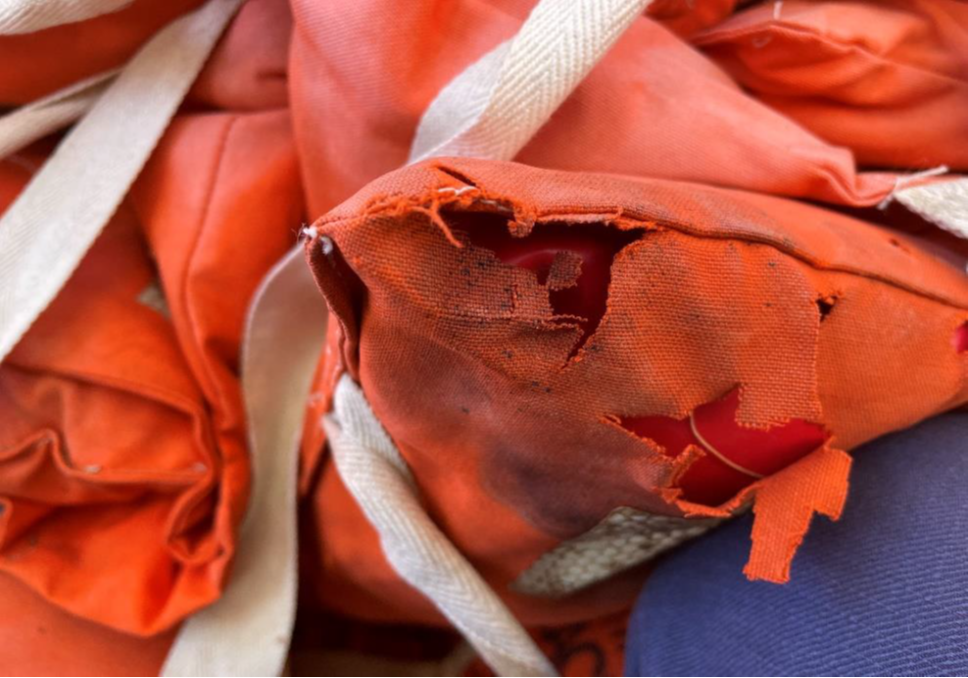
Figure 6: Damaged lifejackets onboard a Class 1 vessel.
Key takeaways for Accredited Surveyors
- Photographic evidence
Section 2.9.2 (3) of SAGM Part 2, regarding the documentation supporting recommendation is cited below.
- All supporting documentation must be provided to the Natioanl Regulator with the recommendation.
Note Photographs are a good source of evidence and should be maintained by the surveyor and provided to the National Regulator on request
AMSA appreciates that some AMS are already taking a proactive approach of providing photographic evidence of the surveyed items as part of their recommendations in MARS. If the AMS uploads photographs of defective items in MARS, AMSA also expects AMS to provide the repaired/corrected photographs as well.
It is AMSA’s expectation that the AMS shall provide AMSA with the photographic evidence of the surveyed items (while responding to the audit commencement email for the Major audits or while responding to the findings report for a Complaint Audit). AMSA encourages all AMS to take adequate photographs with date stamps (as far as practicable) for the surveyed items, so that their recommendations to the National Regulator are defensible & auditable.
- Corrective actions for non-conformances
AMSA has noticed that some of the AMS, while addressing corrective action for non-conformances identified during audits, are only focussed on correcting immediate issues to address the finding. AMSA encourages all AMS to also address any systemic issues in their survey practices/techniques/procedures to prevent re-occurrences of similar findings.
AMSA has identified that several AMS’s do not undertake corrective actions for audit findings in a timely manner. AMSA would like to remind AMS’s that failure to undertake appropriate corrective actions in a timely manner or the audits resulting in serious findings may result in Infringement Notices, show causes or compliance actions on the AMS’s accreditation.
Domestic Commercial Vessels - Decks
Types of Decks
Most commercial vessels have one or more open decks, and according to NSCV C1 definitions these can be categorised as three (3) different types.
| Category | NSCV C1, 1.5 Definitions | Examples* |
|---|---|---|
| General purpose deck | means an open deck that is neither a special purpose deck nor a special working deck. | Passenger deck on a ferry Deck on a whale and dolphin watching ecotourism vessels Deck on a sightseeing tour vessel |
| Special purpose deck | means an open deck: (a) that can be accessed by passengers; and (b) that is used for the special purpose of the vessel; and (c) for which full height bulwarks would significantly interfere with the special purpose or cause safety risks from the special purpose. | Lifeboat or liferaft launching deck Swim platform Boarding platform for snorkelling and diving operations Foredeck on a sailing vessel Heli decks |
| Special working deck | means an open deck: (a) for which full height bulwarks or guardrails would significantly interfere with the special purpose of the vessel or cause safety risks arising from the special purpose; and (b) that is only accessed by: (i) crew or special personnel; or (ii) passengers for the purpose of engaging in adventure activities. | Deck of tugs and vessels engaged in towing operations Deck of commercial net fishing vessels Deck of a landing barge |
| * Examples are generalised, each case must be assessed individually. | ||
Each deck must be categorised when applying NSCV C1 Chapter 6 Personnel Safety requirements. For a new design this may be straightforward but for exiting vessels that have made a transitional change under Schedule 1 of Marine Order 503, this can cause confusion. The use of the vessel and the deck configuration must be analysed with input from the owners and operators to determine the exact use of each deck.
NSCV C1 Chapter 6
When applying clause 6.4 Bulwarks and guardrail requirements, the deemed to satisfy solution in clause 6.12.3, the minimum height of bulwarks and guard rails depends on the deck categorisation. In Table 29 reduced heights are allowed for special purpose and special working decks, but with additional measures required as detailed in clause 6.12.4 which refers to Table 30. There are nine (9) measures listed, with their applicability varying for seagoing (Class A, B and C) and sheltered water (Class D and E) vessels. The minimum specifications are in clause 6.12.7 of the standard.
When implementing, applicable additional safety measures must be expressly documented in the vessel’s safety management system as required by clause 6.12.4 (b).
Alternative way to accept
If it is not practical to apply these measures and the deck does not comply, risks may be reduced by limiting access, thus must however be realistic. For example, if crew cabins or toilets are to be accessed via this deck then access cannot be restricted as it is a basic need of the crew to always have access to these facilities. Access controls may be applied to decks that are used for a short duration, such as mooring decks and decks that are used only for maintenance.
How to report
During initials surveys, it is expected that these requirements are identified and assessed at the plan approval stage and documented in the plan approval letter. During commissioning a check must be carried out to ensure they are implemented. During periodic surveys a check must be carried to ensure they are in good order and reported correctly under the deck survey section of the AMSA 901 or surveyor’s equivalent.
Understanding Conflict of Interest Provisions for Accredited Surveyors under the National Law Regulations
As an accredited surveyor operating within Australia's domestic commercial vessel industry, you are entrusted with ensuring that vessels meet the safety standards under the National Law framework. Central to this role is your obligation to perform your duties impartially and without any conflict of interest.
The National Law Regulations contain specific provisions aimed at preventing conflicts of interest, which are critical to maintaining the integrity and safety of maritime operations. This article outlines these conflict-of-interest provisions and provides example scenarios of conflicts that may arise during your work.
Conflict of Interest Provisions: An Overview
Section 37 of the Marine Safety (Domestic Commercial Vessel) National Law Regulation 2013, prohibits the conduct of a survey of a domestic commercial vessel in circumstances where there may be a conflict of interest. Specifically, an accredited surveyor must not conduct a survey or make a recommendation if they have a direct or indirect interest that could conflict with the proper performance of their duties as an accredited surveyor.
Consistent with these provisions, AMSA reminds you of the importance of avoiding situations where your objectivity could be compromised, either by financial incentives, personal relationships, or other external pressures. The key is that your decisions must be based solely on whether a vessel meets the prescribed standards - not on any other interest.
Examples of Conflict of Interest
Conflicting duties as Accredited Surveyor and Owner’s representative
Scenario: You enter into an agreement with a vessel owner to act as their project manager and owners’ representative throughout a survey process for their vessel. The owner also asks you to also conduct the surveys of their vessel as an accredited surveyor.
If you had been engaged only in your capacity as an accredited surveyor, your duty would be to objectively assess the vessel's condition, document the construction process, identify any non-compliance issues, and communicate them to the owner. It would then be up to the owner or their representative to decide how to address the defects to meet the standards. This may include holding discussions with you in your capacity as a surveyor on possible ways forward.
Conflict: In this scenario, you have made a commitment and will receive financial consideration to provide a service to the vessel owner that may conflict with your duty as an accredited surveyor.
The agreement creates a duty to the owner to represent their interests throughout the process. An owner representative’s duty will generally include for example minimising the inconvenience and cost of the survey process. As an owner’s rep you may need to take on a role as advocate on behalf of the owner to seek exemptions from non-compliances and identified safety requirements. Your actions are aimed at securing a tailored boutique solution that would allow the vessel to be certified despite its non-compliance, rather than ensuring that the vessel meets the necessary safety standards.
This may conflict with your duty as a surveyor and your conditions of accreditation under the National Law to ensure the vessel meets the applicable standards and has been subject to the required surveys, regardless of cost and inconvenience.
This relationship might reasonably be seen to give rise to a conflict between your duties as a surveyor and your interests under the arrangement, including improperly influencing the performance of your duties and responsibilities as an accredited marine surveyor. This could also extend to any financial interest or payment you receive for your services under the agreement.
Personal Relationships:
Scenario: A close friend or family member owns a vessel that requires surveying. They ask you to conduct the survey.
Conflict: Conducting a survey for a relative can give rise to a conflict of interest and is expressly precluded by section 37(1)(b) of the Regulation. In such cases, you should remove yourself and refer the survey to another accredited surveyor.
Consequences of Breaching Conflict of Interest Provisions
Breaching the conflict-of-interest provisions not only jeopardises maritime safety but also has significant legal and professional repercussions. If a surveyor is found to have acted in a way that constitutes a conflict of interest, their accreditation could be revoked or suspended under Division 3.4. Furthermore, such actions could lead to legal proceedings, damage to professional reputation and potentially severe financial penalties.
Upholding Professional Integrity
To avoid conflicts of interest, always ask yourself the following questions before undertaking a survey:
- Do I have any financial interest in the outcome of this survey?
- Could my relationship, including any other contractual relationships with the vessel owner or operator, influence or be perceived to influence my decisions?
- Have I made any promises to the owner that could affect my impartiality?
If the answer to any of these questions is "yes," it is crucial to remove yourself from the situation to maintain the integrity of your role. For example, by referring the owner to engage another impartial surveyor. By adhering to these conflict-of-interest provisions, you contribute to the safety and reliability of Australia's maritime industry.
Conclusion
As an accredited surveyor, your role is central to ensuring that vessels operating within Australian waters are safe and compliant with the survey requirements. The conflict-of-interest provisions set out in the National Law Regulations are designed to protect the integrity of this process.
If you encounter a situation where a conflict of interest might arise, seek guidance or pass the survey to another qualified surveyor to avoid any potential breaches.
Remember, your duty as an accredited surveyor is to comply with the requirements and conditions of accreditation under the National Law and ensure the safety and compliance of the vessel, not to fulfil commitments you have made to owners or family members.
Temporary Operations Permits – Division 5 and 6 – Ongoing Issues
In the August 2020 edition of Survey Matters, titled “Issuing temporary permits under divisions 3, 5 & 6 of exemption 7”, and the January 2023 edition, “Are you issuing temporary operations documents correctly?”, AMSA provided guidance and advice on the proper issuance of temporary operations exemptions. Recent audits undertaken by AMSA have shown that errors are still occurring in issuing temporary operations permits where the relevant criteria for issue was not satisfied.
The errors are mainly occurring on permits issued under division 5 and 6 of exemption 7 (EX07).
Under divisions 5 and 6 of EX07 an accredited surveyor may issue a temporary operation permit only where relevant criteria are satisfied. The criteria for issue generally includes relevant vessel surveys being carried out, and the person who conducted the surveys considering whether the vessel complies with the applicable standards specified for each division.
The criteria under division 5 of EX07 requires (among other things) that the vessel has completed a periodic survey. The criteria under division 6 of EX07 requires (among other things) that the vessel has completed a renewal survey. SAGM Part 2 defines a renewal survey as:
... 'surveys undertaken at the end of a survey cycle, while the vessel is out of the water, and while afloat, to determine if the safety systems and safety characteristics of a vessel at that point in time comply with the applicable legislation, exemptions and standards.'
Clause 4.11 of SAGM Part 2 sets out the scope and depth of a renewal survey. It requires that the survey must include the examinations, verifications, tests and trials of the items specified in Table 9 relevant to the survey type. Table 9 also requires shaft and lightship inspections to be completed as a part of a renewal survey.
Recent examples have again shown that temporary operations permits are being issued under division 6 when the renewal survey was incomplete. In one case only the in-water and lightship surveys had been completed and no application for renewal of the vessels certificate of survey had been made.
The criteria for issue under division 6 was not met, because the surveyor had not conducted the examinations required for a renewal survey. Note, it is not the signed document alone that exempts the vessel, it is the fact that the vessel complies with the conditions for the issuing of the documents. Getting this wrong, can have serious consequences for the vessel owner.
Division 7 of EX07 is available for a vessel to be operated after the certificate of survey has expired and only the in-water components of the renewal survey have been completed. An accredited marine surveyor cannot issue a temporary operations exemption under this division. It is the operator who must make an application using the AMSA 777 form if they wish to utilise Division 7.
Instruction to Surveyors DCV-ITS-002 provides detailed advice on the issue of temporary operations exemptions. Please review this instruction before issuing permits under division 5 & 6 of Exemption 7
Instructions to Surveyors (DCV-ITS-022)
The long awaited Instruction to Surveyors (ITS) for the inspection of foam buoyancy, hull voids and fuel tank compartments at 10 yearly surveys is now live on the AMSA Website; https://www.amsa.gov.au/vessels-operators/domestic-commercial-vessels/instructions-surveyors This ITS was created on the back on the discussions and ideas of accredited marine surveyors at the 2022 surveyor workshop. The initial draft was then released in survey matters and further refined based on feedback received. AMSA is very appreciative of the discussion and feedback provided by the surveyor community to create a useful tool for reference.
Surveyor judgment and experience on the ground is fundamental to the practical implementation of the ITS. Ultimately it is for the surveyor to provide technical justification of the approach taken to establish the condition of the items being surveyed. The ITS provides a defendable framework for establishing this justification.
Guidance is also provided for builders and plan approval surveyors for design details that should be included at the design and construction stage. This will facilitate the survey of the vessel in the future, without the need for costly and potentially destructive works in the future. These represent a very tangible and marketable saving in cost of ownership and require minimal additional effort at the design and construction stages.
We strive for continual improvement in the resources provided to surveyors and welcome any feedback or suggestions for this ITS, others already available or those to be created.
Surveyor Workshop – October 2024
AMSA are pleased to announce that we are planning another surveyor workshop in October. Drawing on the feedback we received from the workshop in May, we will continue our established online format of dedicating different days to initial, periodic, and electrical surveys. However, we are shortening the duration to just one and a half hours to fit the workshop into busy schedules more efficiently.
The agenda is currently in development and will be tailored to cover the most relevant topics for each survey type. We can assure you there will be varied content between the days. We also invite participants to share any additional subjects they would like us to explore in this or future workshops.
Finally, we are actively exploring other options to access the workshop recordings, as we recognise that the platform used for the May workshop was challenging to use.
We look forward to welcoming you to an informative workshop in October.
Alternate Survey Approvals - Surveyors must conduct surveys in accordance with prescribed standards
Accredited surveyors are required to conduct surveys in accordance with the survey standards prescribed under section 32 of the National Law Regulations. Marine Order 503 and the Surveyor Accreditation Guidance Manual (Part 2) provide that the Australian Maritime Safety Authority (AMSA) may approve an alternative standard for the performance of surveys.
Surveyors intending to deviate from the prescribed standards must obtain alternative survey process approval from AMSA before proceeding. Conducting a survey without approval is a breach of accreditation conditions and may result in compliance actions or refusal of applications.
Have your say on the new Accommodation, Arrangement & Personal Safety form
AMSA is currently seeking feedback on a new survey form titled “Accommodation, arrangement & personal safety".
Background
AMSA has developed a new form to complement the existing set of forms currently in use by industry. This new form was developed to assist surveyors ensure the vessels arrangement meets the requirements of NSCV Part C, Section 1.
The aim of this form is to assist a surveyor conducting construction and commissioning surveys of a new build vessel. The form outlines the key areas of NSCV Part C, Section 1, which should be confirmed onsite during the build phase of a vessel. This is an area not currently covered in the existing AMSA form set.
Consultation phase
AMSA are seeking feedback on the proposed form prior to circulation for use.
To enable this consultation, AMSA has prepared the following:
- Draft version of the form.
- This draft form can be accessed here:
- Consultation survey form
The consultation phase is open for a period of two months. Final feedback is requested by the 25/10/2024. If you have any questions during the consultation phase, please send an email to dcvsurvey@amsa.gov.au
Next steps
Following the close of the consultation phase period, AMSA will gather all feedback and review. From this, AMSA will make changes where necessary, prepare the final version of the form and implement the processes required for submission of this form.
We encourage everyone to review the proposed form and provide feedback to AMSA.
10-year surveys must be completed
AMSA continues to receive Certificate of Survey (CoS) renewal submissions where the required 10-year survey items have not been completed. This oversight can lead to significant delays and possible rejection of applications.
To avoid these issues, AMSA reminds surveyors that when conducting a renewal survey, it is crucial to ensure that all 10-year survey items are completed as required.
Since the service delivery transition in 2018, AMSA’s policy has required 10-year surveys to be completed by the second renewal survey conducted after 2018, if not earlier. This requirement is also highlighted in the reminder letters sent to certificate holders.
For most vessels, the next renewal will be the second one due after 2018.
Surveyors can take the following steps to determine if 10-year surveys are due:
- Review certificate: Check the conditions on the certificate of survey. AMSA includes notes on 10-year survey due dates on initial and transitional certificates of survey.
- Check the vessel report: the reminder letter sent to the certificate holder includes a vessel report. When preparing for a survey, request the vessel report from the owner along with the relevant survey codes. Alternatively, download the vessel report from MARS by following the steps in Chapter 5 of the MARS User Guide.
Refer to the “notes/observations section for 10-year renewal survey items” section at the bottom of the vessel report. This section provides information on past surveys, including dates and types of inspections performed. Comments in this section are from previous surveyors and not AMSA. Review these comments as well to identify what has been conducted e.g. partial inspection only.
If there is no information or comments available for an applicable 10-year item, it will not appear on the vessel report.
- Seek AMSA clarification: If you are uncertain after reviewing the certificate and vessel report, email DCVSurvey@amsa.gov.au for clarification before undertaking the survey.
The 10-year survey items are outlined in SAGM Part 2, Chapter 4.11(2), which states:
(2) In addition to the items specified in Table 9, the following inspections must be carried out on a vessel at every second renewal survey for the vessel, which should occur at intervals not exceeding 10 years and six months:
- ultrasonic thickness for vessels having metallic hull;
- withdrawal of sample fastening for vessels having wooden hull;
- hull in way of removable ballast;
- verify internal foam buoyancy if not fully inspected during the five yearly in and out of water survey because of inaccessibility;
- internal hull inspection if not fully inspected during the five yearly in and out of water survey because of inaccessibility;
- pressure test all sea water pipes;
- internal fuel tank inspection of at least half the number of the tanks on board; and
- internal inspections of all other tanks not mentioned in Table 9.
Example of other tanks sludge, sewage, drain tanks
Survey Matters suggestions
- AMSA wants to make sure Survey Matters is relevant and useful for accredited marine surveyors, boat builders, class societies, and others involved in the survey of domestic commercial vessels.
- We encourage our readers to submit subject requests or ideas to DCVSurvey@amsa.gov.au for articles that would be of assistance to industry in future publications.